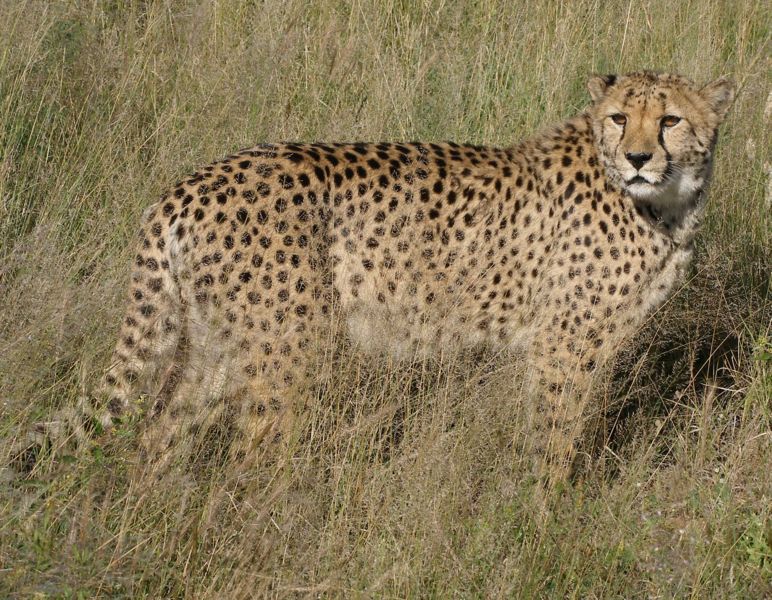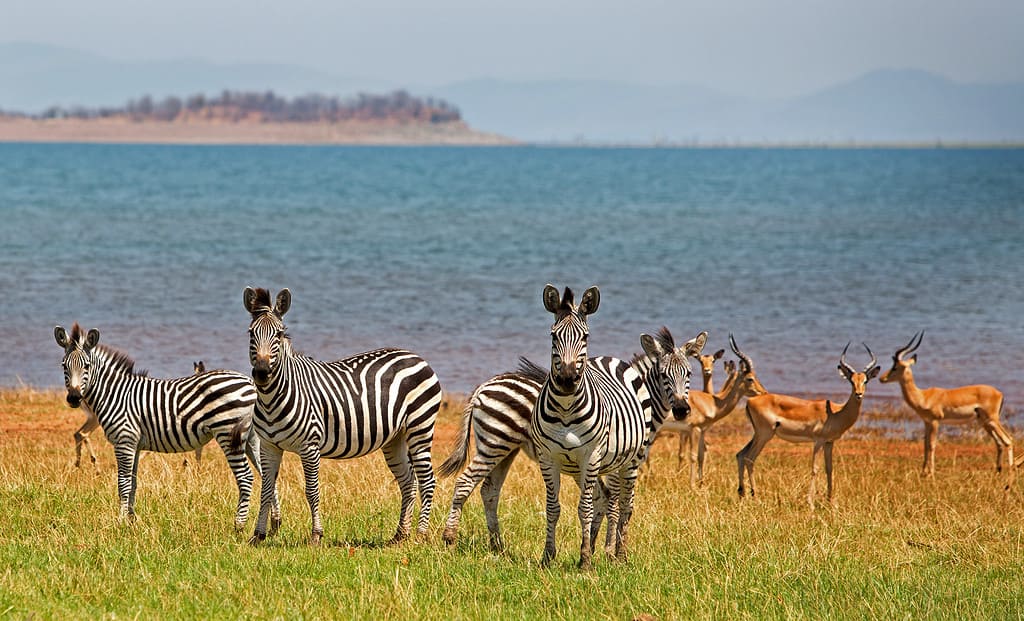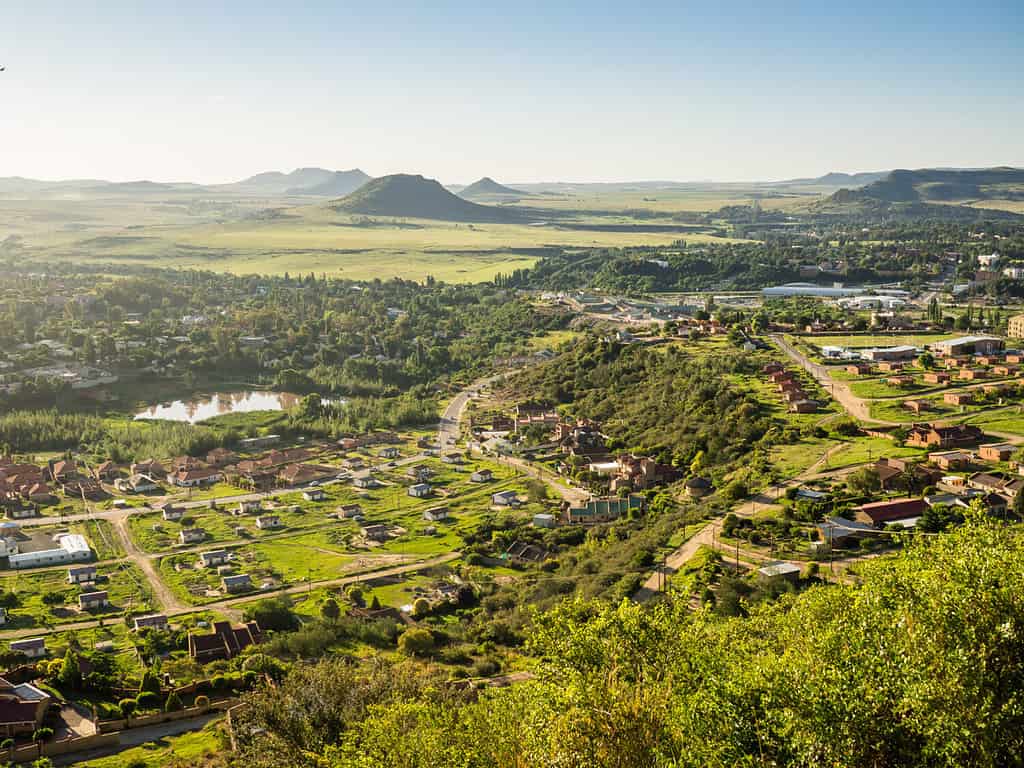South Africa is located in Africa and is one of the biggest countries on the continent, both in area and in population. Historically, South Africa has had a controversial history, especially in the 20th century as the country claimed its independence from the United Kingdom in 1910.
The country has a temperate climate, and its climatic regions range from desert to humid subtropical, depending on where you are in the country. South Africa is also home to thousands of wildlife species including elephants, lions, and hyenas. The country also has tens of thousands of diverse plant species.
South Africa was settled by tribes for thousands of years before Europeans came to explore the area. The Portuguese set up camp in the area but after Portugal’s power declined, the Dutch and English moved in. The country was colonized by the Dutch until the British took over in the early 1800s.
For over a century, the country was under British rule until its independence in 1910. White people controlled the government for many decades despite black people fighting for more rights. The government established apartheid in 1948, which brought back institutional racial segregation. The struggle for rights continued until finally, in 1994, apartheid was abolished.
Today, South Africa is one of the few countries in Africa that has not experienced a coup d’etat and in the past 30 years, black people have had the right to vote. Let’s explore the six countries that border South Africa.
Namibia

Namibia is home to the most cheetahs in the world.
©Falense, CC BY-SA 3.0, via Wikimedia Commons – Original / License
The country of Namibia borders South Africa to the north. Namibia is one of the driest countries in Sub-Saharan Africa with the climate of the country being mostly arid and hot. The Bantu people have been the dominant ethnic group in the country for over 600 years. In 1884, the German Empire took control of the country and was responsible for the genocide of the Herero and Nama people.
After World War I, power in the country transferred to South Africa. They ruled Namibia until Namibians waged war against South Africa, a war for independence that lasted 24 years. They finally won independence in 1990.
Today, Namibia is a parliamentary democracy and has a slowly thriving economy. Its economy is dependent on agriculture, tourism, and mining.
Botswana

The country of Botswana is home to the densest concentration of elephants.
©iStock.com/Ondrej Prosicky
Botswana borders South Africa to the north and its capital, Gaborone, is on the border between both nations. The country is mainly a desert with the Kalahari Desert covering more than 70% of Botswana. Because of this, the African nation hardly gets any rain and is prone to droughts. Part of the country is also covered in savannah grassland where elephants make their home. Unfortunately, Botswana has reintroduced elephant trophy hunting in the country after banning it in 2014. Meerkats also live here, as well as lions and cheetahs.
The largest ethnic groups that live in Botswana are the Tswana, the Bushmen, and the Kalanga. When it comes to the country’s history, Botswana claimed independence from Britain in 1966. And unlike many other countries in the continent, Botswana was named the least corrupt country in Africa.
Zimbabwe

There are 16 official languages in
Zimbabwe
, the most of any country in the world.
©iStock.com/paulafrench
Zimbabwe borders South Africa to the northeast. It is a landlocked country with a diverse topography including plateaus and a mountainous region. The country experiences a subtropical climate. It is a very biodiverse country in Africa, unfortunately, because of deforestation and poaching, the environment in Zimbabwe has been threatened and the amount of wildlife has decreased drastically.
The Kingdom of Zimbabwe, formed in 1220, lasted several hundred years and was replaced by various empires. The British took over the area, calling it Southern Rhodesia. In 1965, the white government declared independence and what followed was a 15-year civil war, with the white minority fighting against black nationalist forces. In 1980, there was a peace agreement. Robert Mugabe became Prime Minister and then established an authoritarian regime with himself as President. Mugabe resigned in 2017 after a coup d’etat. Today, Zimbabwe is a republic.
Mozambique

The African elephant is the national animal of Mozambique.
©Sopotnicki/Shutterstock.com
Mozambique borders South Africa to the northeast. It sits on the eastern part of the African continent and thus gets monsoons frequently. The wet season from October to March can get intense with heavy rains that have caused flooding along the coastal regions of the country. Geographically, the country has hills and plateaus.
With the arrival of the Portuguese at the end of the 1490s, Portugal established its presence in the country and took control for over 400 years. It gained its independence in 1975, but because of colonialism, its only official language is Portuguese. Since then, the economy of Mozambique has been on the rise, with fishing being a prominent sector. Unfortunately, the country is still underdeveloped and one of the poorest in the world.
Eswatini

Eswatini’s HIV/AIDS prevalence rates are the highest in the world at 28.3%.
©Sopotnicki/Shutterstock.com
The country of Eswatini borders South Africa to the northeast. It’s a tiny kingdom whose name used to be Swaziland but King Mswati proclaimed the name change to Eswatini in 2018. A landlocked country, Eswatini is covered in three distinct geographies: coastal forests, woodlands, and grasslands. It also is extremely biodiverse with thousands of plant and animal species. Eswatini has also established more than a dozen nature reserves to protect wildlife. The country proclaimed its independence from the United Kingdom in 1968 and established an absolute monarchy.
Eswatitni is a developing country and currently, the people of the country are lower to middle-income, even though one-third of Swazi people live below the poverty line. Eswatini also is plagued with health problems, mainly HIV/AIDS and tuberculosis. About 28% of the population in the country are HIV-positive. It also has one of the lowest life expectancies in the world at 58 years old.
Lesotho

The country of Lesotho is known as the “Kingdom of the Sky” because of its high altitude.
©sfriessner/Shutterstock.com
Lesotho is a tiny landlocked country that is completely surrounded by South Africa. It is a mountainous country and Lesotho is home to the highest peak in the continent. King Moshoeshoe I formed Lesotho in 1822 and subsequently ruled the country until his death. It was during his reign that he allowed the Dutch to settle there and eventually it became a protectorate of Great Britain. Lesotho claimed independence in 1966.
Lesotho is a developing country that unfortunately is plagued by poverty with nearly 50% of its population living below the poverty line. The country also has a high rate of HIV/AIDS with nearly one-third of the country being HIV-positive. Fortunately, however, the literacy rate in Lesotho is 81%, which is one of the highest literacy rates in the African continent.
South Africa Facts

South Africa produces the most macadamia nuts in the world.
©Deyan Denchev/Shutterstock.com
- Capitals: Pretoria (executive), Cape Town (legislative), Bloemfontein (judicial)
- Population: 58 million
- Currency: South African rand
- Official Languages: Afrikaans, English, Ndebele, Sepedi, Sesotho, Setswana, South African Sign Language, Swazi, Tshivenda, Xhosa, Xitsonga, Zulu
- President: Cyril Ramaphosa
- Deputy President: Paul Mashatile
Conclusion
The countries that border South Africa include Namibia, Botswana, Zimbabwe, Mozambique, Eswatini, and Lesotho. South Africa has established itself as one of the most powerful countries on the African continent. The country is a melting pot and Bishop Desmond Tutu has referred to the country as a “rainbow nation.”
It has also legalized marriage equality and its economy has bounced upward. Quality of life has increased since the end of apartheid, but poverty is high, and crime is rampant. A whopping 60% of South Africa’s population lives under the poverty line and 40% are unemployed.
South Africa has a history like no other in Africa. The Rainbow Nation still has a long way to go to ensure economic equality, but there is hope that it will happen in the future.
Thank you for reading! Have some feedback for us? Contact the AZ Animals editorial team.








